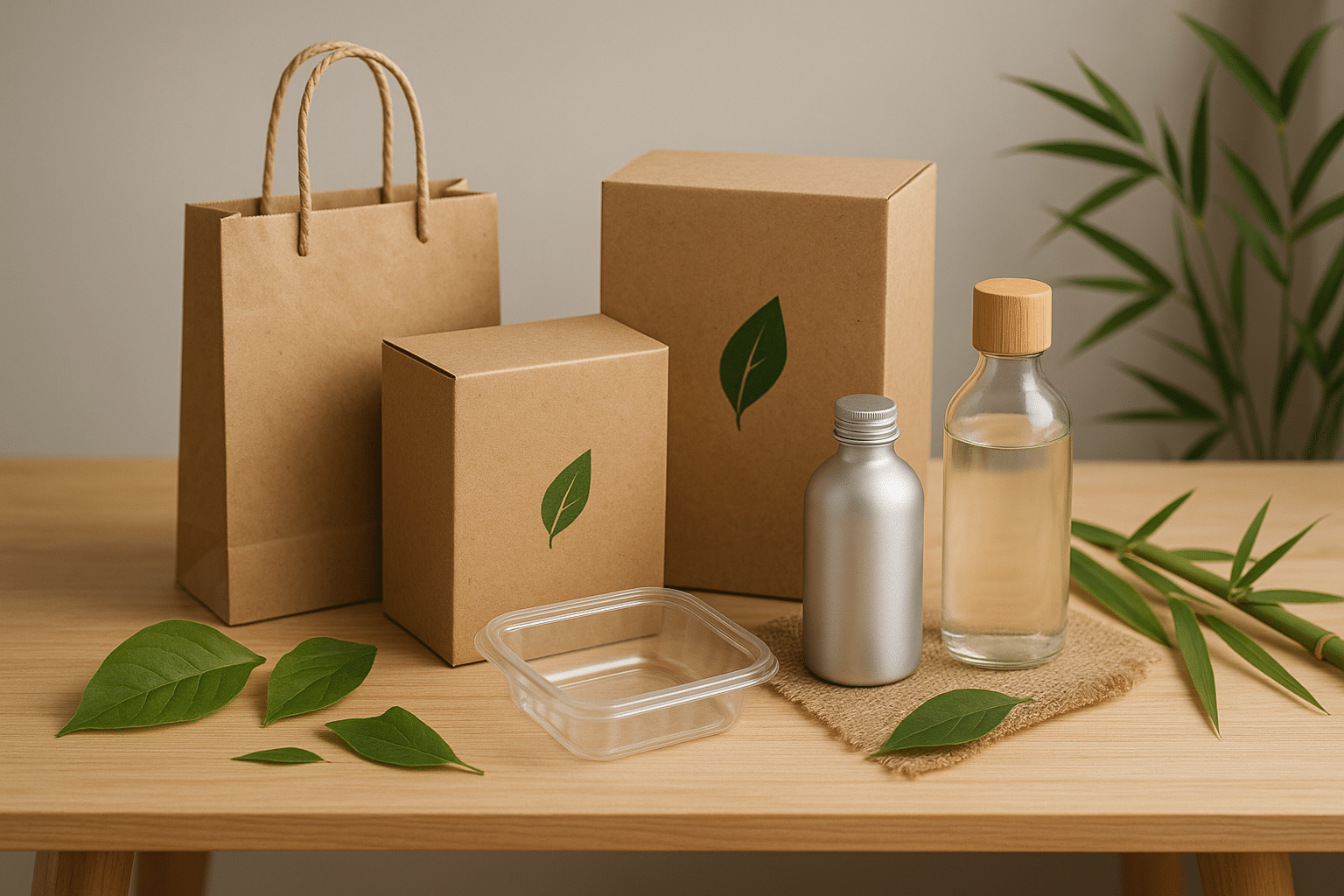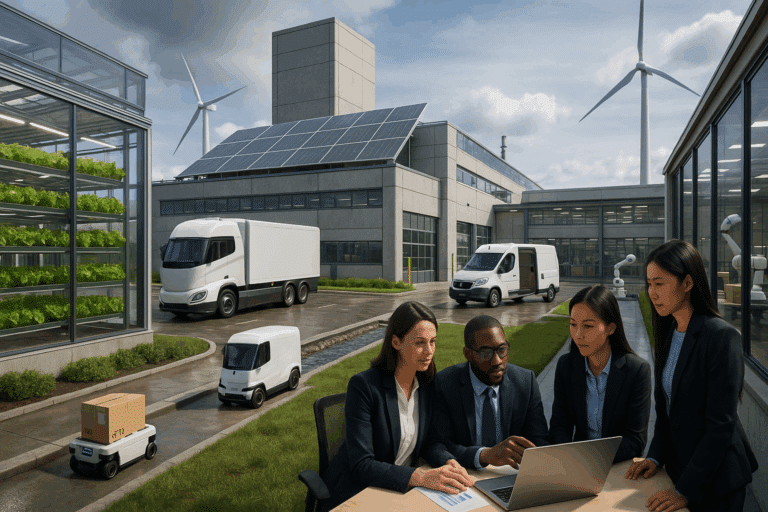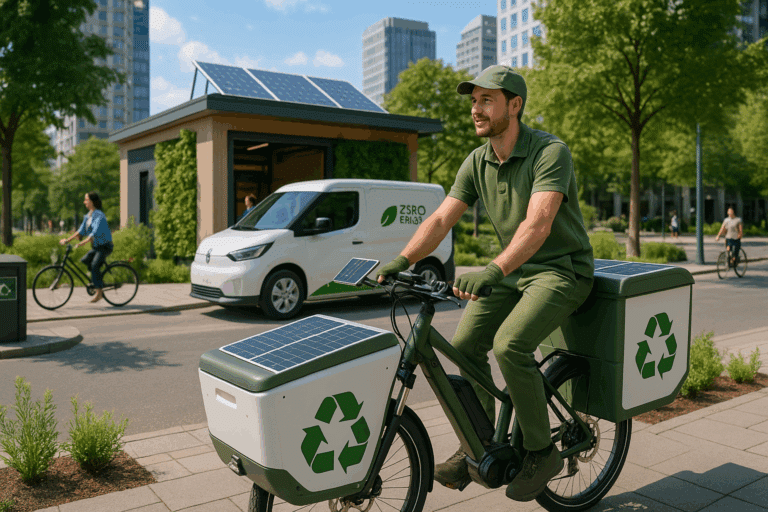The global call for sustainability is echoing across industries, pushing corporations to think beyond traditional methodologies and towards greener solutions. As we delve into this fascinating realm, you’re going to discover the latest green innovations in packaging that are making a sustainable impact on our planet. 🌍
Did you know that approximately one-third of all municipal solid waste in the U.S. comes from packaging? It’s a staggering figure, but fear not, as this is a challenge that is being met head-on. From plant-based materials to compostable packaging, industry leaders are pioneering sustainable alternatives to mitigate the environmental impact. By the end of this article, we’ll have taken a deep dive into these earth-friendly alternatives, understanding their functionality, benefits, and potential for scalability. 📚
But before we do, let’s take a moment to understand what sustainable packaging really means. What are its criteria? And why does it matter in the first place?
Sustainable Packaging: A Necessary Revolution
In essence, sustainable packaging refers to the process of designing and using packaging in a way that reduces its environmental impact. This could involve the use of renewable materials, energy-efficient manufacturing processes, and innovative design strategies that minimize waste. It’s about creating a packaging system that integrates seamlessly into our ecological system, without the debilitating effects associated with conventional materials like plastic. It’s a necessary revolution indeed! 🔄
The Impact of Sustainable Packaging
Imagine the potential if all packaging was sustainable! The decrease in waste generation, the preservation of natural resources, the minimization of carbon footprints – it’s a vision worth pursuing. And companies worldwide are recognizing this, investing billions into R&D to make this vision a reality. We’re witnessing a shift in consumer behavior too, with more and more people favoring brands that align with their environmental values. The stakes are high, and the rewards are substantial. It’s a movement that promises to transform not just the packaging industry but also our environment at large. 🌿
Ready for a Deep Dive?
Now that we’ve set the stage, it’s time to delve into the specifics. In the following sections, we’ll be exploring several cutting-edge green innovations in packaging that are redefining the industry. We’ll take a close look at how these technologies work, their practical implications, and their potential to reshape the future of packaging. From mushroom-based packaging to edible containers, we’re going to uncover some of the most inspiring and revolutionary green packaging solutions out there. 🚀
It’s going to be an enlightening journey, one that underlines the intersection of technology, innovation, and sustainability. So, if you’re intrigued by the potential of green packaging and are keen to understand its dynamics, sit tight! We’re about to embark on a deep dive into this captivating world of sustainable innovation. Let’s revolutionize packaging, one green innovation at a time! 💚
The Dawn of a New Era: Sustainable Packaging Innovations
With the alarming rise in environmental pollution and a pressing need to mitigate climate change, industries across the world are embracing sustainability like never before. And the packaging sector is no exception. The sector, infamous for its contribution to plastic waste, is now witnessing a remarkable transition towards green packaging options. This article aims to explore the latest sustainable packaging innovations that are revolutionizing the industry, driving a global impact.
Before diving into these advancements, it’s worth mentioning that sustainable packaging doesn’t merely involve using recyclable materials. It extends to considerations such as energy efficiency in manufacturing, waste reduction, carbon footprint, and life cycle assessment. To truly understand the potential of these green innovations, one must adopt a holistic view of sustainability.
To illustrate these emerging trends, a comparison between conventional and sustainable packaging materials and processes is presented below.
Comparative Analysis: Conventional vs. Sustainable Packaging
| Attributes | Conventional Packaging | Sustainable Packaging |
|---|---|---|
| Materials Used | Plastic, Styrofoam, etc. | Recycled Cardboard, Cornstarch, etc. |
| Manufacturing Process | Energy-intensive, High Carbon Footprint | Energy Efficient, Low Carbon Footprint |
| End of Life | Non-Biodegradable, Often Landfilled | Recyclable, Compostable |
From the table, it’s evident that sustainable packaging is a far superior choice for the environment. Now, let’s move onto exploring some of the most promising green packaging innovations that are leading this sustainable revolution.
Innovative Green Packaging Solutions
Today, numerous forward-thinking companies are bringing ground-breaking sustainable packaging solutions to the market. They are pushing the boundaries of traditional packaging and demonstrating that sustainability and functionality can indeed go hand-in-hand. Here are some of the most innovative green packaging technologies changing the game.
Edible Packaging
As the name suggests, edible packaging is a type of packaging that you can eat! It’s typically made from food-grade substances and is a great alternative to single-use plastics. Companies like Loliware and Evoware are pioneering this space with their edible cups and seaweed-based packaging materials, respectively.
Mushroom Packaging
Ecovative Design is a company that has harnessed the power of mycelium, the root structure of mushrooms, to create a completely biodegradable and home-compostable packaging material. This innovative material is not only eco-friendly but also possesses excellent protective properties, making it a viable alternative to Styrofoam.
Plantable Packaging
Imagine a packaging that doesn’t just protect your product, but also gives life to a new plant. That’s exactly what plantable packaging does! Companies like Pangea Organics are using this ingenious idea to package their products in seed-infused boxes that can be planted after use.
For more visual insights into these sustainable packaging solutions, watch this video “Innovative Sustainable Packaging – BBC Click” by BBC News.
The Role of Technology in Sustainable Packaging
Technology is playing a pivotal role in advancing sustainable packaging practices. From improving manufacturing processes to enhancing recycling capabilities, technological innovations are accelerating the shift towards green packaging.
Advanced Sorting Technology
One of the biggest challenges in recycling packaging waste is the separation of different materials. Advanced sorting technologies like Near-Infrared (NIR) and X-ray fluorescence (XRF) are enabling more efficient and accurate waste sorting, thereby increasing recycling rates.
Digital Printing
Digital printing technology is also contributing to sustainability in packaging. It reduces waste by allowing for shorter print runs and eliminates the need for printing plates, resulting in energy savings and lower emissions.
Blockchain Technology
Blockchain is emerging as a powerful tool for enhancing transparency and traceability in the packaging supply chain. It can provide valuable data on the lifecycle of packaging materials, aiding in better waste management and recycling practices.
The green innovations discussed in this article are just the tip of the iceberg. The packaging industry is ripe for a sustainable revolution, and with continuous research and development, the future of packaging looks promisingly green. As consumers, let’s do our part by choosing products with sustainable packaging and contributing to a healthier planet.

Conclusion
In conclusion, the significance of our exploration in the realm of Information Technology (IT) and engineering cannot be overstated. The core themes and principles we’ve delved into reflect the intricate and multifaceted nature of these disciplines, requiring a meticulous approach and an ability to decode complex concepts into comprehensible language.
In our journey, we began by examining the fundamentals of software engineering, understanding its vital role in developing reliable, efficient, and high-quality software solutions. Its processes, methodologies, and practices serve as the lifeblood of the technology industry, stimulating innovation, and progression.🔗
We then shifted our focus to the application and interpretation of data, which forms the backbone of decision-making in today’s digital world. The role of data science in extracting meaningful insights from vast amounts of data is monumental. Our discussions around machine learning and artificial intelligence have further illuminated the transformative potential of these technologies in various sectors. 🔗
Moreover, our exploration of cybersecurity emphasized the importance of safeguarding digital assets, information, and systems. In an era where digital threats are increasingly sophisticated, understanding cybersecurity best practices is paramount. 🔗🔒
Finally, the integration and synergy between IT and engineering sectors were underscored, revealing the interdisciplinary nature of these fields. The convergence of these sectors is driving unprecedented technological advancements, shaping our future and how we interact with the world around us. 🔗🚀
Through this article, my goal has been to demystify these topics, making them more accessible to you. Understanding these concepts is not only integral to professionals in the field but also to anyone navigating today’s digitized world.
I encourage you to delve deeper into these topics, share your thoughts in the comments section below, or better yet, apply the knowledge gained in your professional or personal pursuits. Don’t hesitate to share this article with your colleagues or friends who might find this information beneficial. 👥
Remember, knowledge is power, and the more we understand about these complex domains, the more adept we become at using technology responsibly and effectively. I hope that this article has sparked your curiosity and inspired you to continue exploring these fascinating disciplines.
Stay tuned for more in-depth articles and keep learning! 💡🎓
In the end, I want to thank you for your time and engagement, and I look forward to your feedback and discussions. Your active participation is what fuels this platform, making it a vibrant community for learning and growth.
Stay curious, stay informed, and let’s keep pushing the boundaries of knowledge together! 🌐✨
Sources: IBM, Towards Data Science, Cisco, Science Direct



